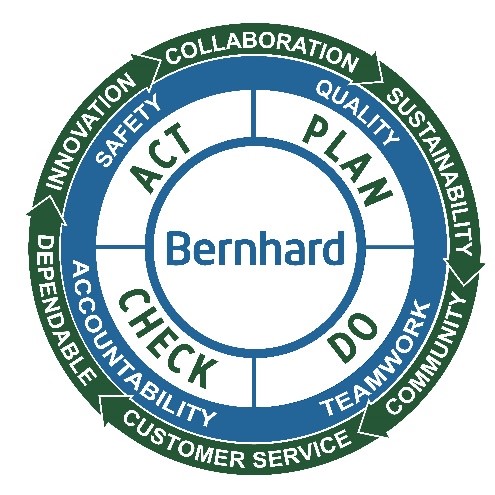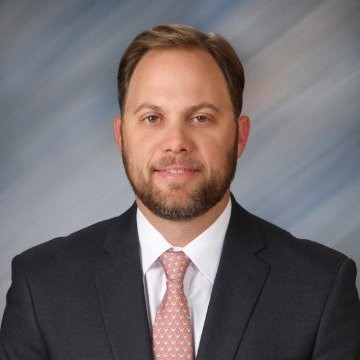How a Bernhard Crew Stuck Together, Became Family, and Built the Raleigh Skyline
_______________
As new projects are started, it’s common in the contracting industry for a crew to shuffle their roster with new incoming workers while outbound members join new teams on different projects. This may be the norm for some, but certainly hasn’t been for one Bernhard crew in North Carolina.
A group of 26 crewmembers have stayed together and are finishing their third project in the Raleigh area with plans to stay together for a fourth.
“I haven’t seen anything like it,” said Stacy McKillips, superintendent. “There is definitely a culture here now where we have more of a family than a crew.”
Beginning in July 2017, the crew of 26 has worked on three high-rise apartment buildings (two in Raleigh and one in Durham) totaling more than 1.4 million square feet and 84 stories. North Carolina residents will have seen the result of the crew’s work over the years with the construction of Durham City Center, FNB Tower, and one of the tallest high-rises in the North Hills area, Kane Tower, a 35-story residential tower that is projected to be completed in April 2022. These buildings are some of the latest in Bernhard’s storied 20+ year history working in the Carolinas.
The group of mostly plumbers, sheet metal workers, and pipefitters, includes multiple father-and-son pairs, a father-daughter duo, and even a set of identical twins.
“Even though each person is different and there are so many different backgrounds, everyone gets along,” said Chris Esposito, plumbing superintendent. “Ego gets left at the door immediately and everyone understands they are on the same team and the same level. With that mindset, each member is held accountable and that has created some incredible results.”
The expertise of the group and track record of success is part of what keeps them together. Leveraging the team as a one-of-a-kind asset has increased the demand for their high-quality work.
“We’ve had a pretty impressive run where one project ends and then we’re ready to go onto the next one all in the same region,” said McKillips. “Everyone agrees it makes sense to keep this team together. The results speak for themselves.”
Aside from the connections the workers have made with each other, supervisors and managers have benefitted from the continuity just as much.
“Each job you’ll usually go through learning periods and have to hope the crew catches on quickly,” said McKillips. “These projects don’t have that trial and error period. No one has to play catch up, which greatly increases our efficiency.”
It also enables the team to employ creative solutions to project challenges. For construction of Kane Tower, Bernhard installed piping as individual floors were built to meet demands of an aggressive timeline. This work, along with off-site manufacturing of key mechanical and plumbing components, has helped put the project four months ahead of schedule.
Without a dramatic learning curve, the project site has also become safer, which is always Bernhard’s top priority.
“When you work with new crewmembers, you don’t know what their habits are,” said Pablo Gomez, foreman. “I know exactly the training everyone on this crew has received and I know they practice safe procedures because of our time working with them. That level of comfort allows us to focus on our task with the trust that we are all doing what we’re supposed to.”
The team’s collective experience and knowledge of safety practices is a trademark of Bernhard’s approach to a safer workspace. Bernhard instills safety at every job site with an industry-leading safety training program geared to maintain a safe and healthy work environment, safeguard all persons who enter, work, or live near worksites, and meet or exceed regulatory standards.
The team is scheduled to begin work in 2022 on The Cardinal at North Hills East Tower addition. The 453,390-square-foot building will bring 18 stories of residences and upscale amenities to The Cardinal senior living community. The project is located just blocks away from Kane Tower.
Although the crew are professionals with decades of experience and projects between them, they admit to feeling a sense of pride with what they’ve accomplished together.
“I catch myself noticing the skyline when I drive down the highway,” said Gomez. “It brings back a lot of memories of days on the job with people I now consider good friends.”
If you are interested in opportunities in the craft job market and would like to know more about the benefits of a career with Bernhard, visit bernhard.com/careers for more information.
_______________





